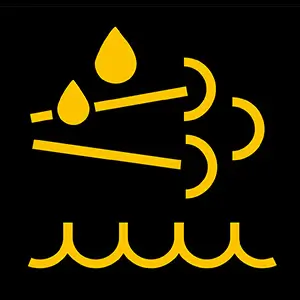If you drive a Dacia Duster, Sandero, Stepway, or even Lodgy, the AdBlue warning light may have already come on — sometimes accompanied by a "Start not possible" message.
What does it mean?
Why does it appear?
How can you turn it off?


Are you looking for a car scanner ?
What does the AdBlue warning light look like on a Dacia?

To locate the AdBlue indicator light in your Dacia, check your dashboard — in most vehicles, it is positioned near the speedometer.
It is typically shown as an orange icon with a wavy line topped by a cloud and two droplets.
Depending on the year and model of your vehicle, a message like “xxxKM LOCK FILL ADBLUE” may also appear on the dashboard.
When in doubt, consult your vehicle’s user manual.
Why does the warning light turn on?
Your vehicle’s AdBlue light can come on for several reasons. First, you need to identify the cause to find the right solution.
If the light is flashing or steady, the AdBlue tank is likely nearly empty.
If the light remains on even after refilling the tank, or if the check engine light is also on, it may indicate a more serious issue with the vehicle’s emissions control system.
How to turn off the AdBlue warning light on a Dacia?
Manually resetting the AdBlue light
- Refill the AdBlue tank: Use a fluid approved by the manufacturer to avoid damaging the system.
- Restart the vehicle: Sometimes restarting the engine after refilling is enough to clear the warning.
- Drive a complete cycle: In some cases, the AdBlue light turns off after driving a certain distance or completing a few trips.
- Diagnostics and repair: If the light remains on, schedule a visit to an authorized service center. The issue may require further diagnostics using a Car Diagnostics Scanner to check the system.

Are you looking for a car scanner ?
The light stays on after refilling
What are the possible causes?
- Crystallized fluid: AdBlue can crystallize when exposed to air or low temperatures. Crystals can clog the injector or tank components, causing the SCR system to malfunction. You can add an anti-crystallization additive during each refill.
- Injector problems: Essential for injecting AdBlue into the exhaust system, injectors can become clogged by crystals or impurities in the fluid.
- Tank issues: Overfilling or spillage can deform the AdBlue tank due to pressure or crystal buildup.
- Stuck sensor: The fluid level sensor may malfunction electronically and wrongly indicate the tank is empty.
- Electrical issues: Communication errors may occur between the system's electronic components.
How to turn off the AdBlue light using the Klavkarr scanner?
It’s possible to reset the AdBlue warning light on Dacia vehicles using a Klavkarr 210 or 310 scanner. Here’s how:
- Switch on your vehicle's ignition
- Plug the Klavkarr into the OBD2 port
- Launch the EOBD-Facile application
- Select the car brand: "Dacia"
- Then choose your model: "Duster, Sandero, Lodgy, Stepway ..."
- Select the ECUs to scan: "Engine ECU" and "Urea Dosing ECU"
- Click on "Next"
- Select the "Urea Dosing ECU"
- Check the displayed fault codes
- Clear them by selecting "Erase" and confirm with "OK"
To clear the AdBlue message on the dashboard after refilling, also perform the following:
- Go to "Special Functions" (only available with the Klavkarr scanner)
- Select "Reset Ammonia Slip Catalyst Counter" and click "Run"
- Ensure the ignition is on and confirm with "OK"
- Once the procedure is done, click “OK”
- Turn off the ignition, wait a few minutes, then restart the vehicle
Want to learn more?
That wraps up our article on clearing the AdBlue warning light on your Dacia. If you have any tips or questions, feel free to leave them in the comments.
You can also share this article with your friends on social media!

